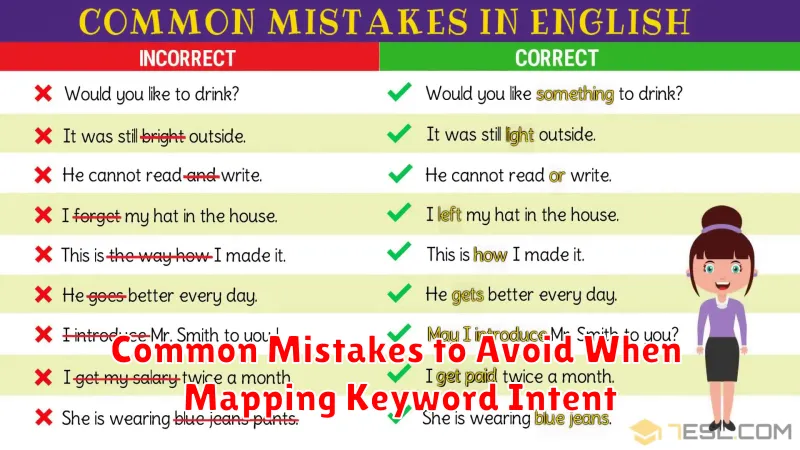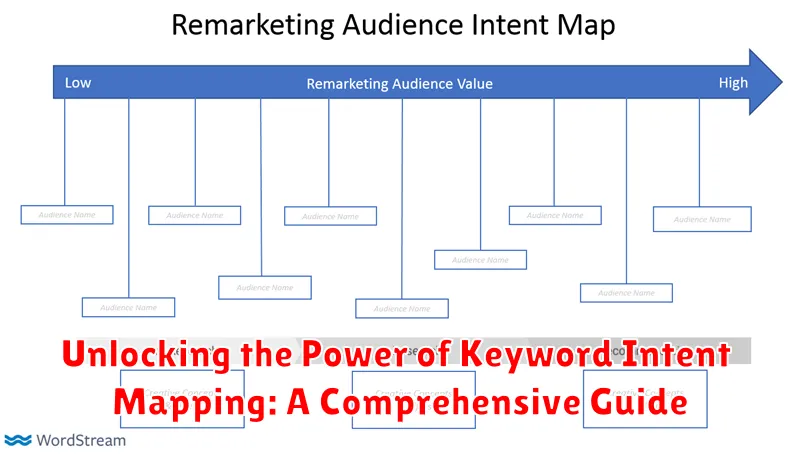In the dynamic realm of search engine optimization (SEO), understanding and leveraging keyword intent is paramount for achieving sustainable online success. This comprehensive guide, “Unlocking the Power of Keyword Intent Mapping,” delves into the crucial process of aligning your content strategy with the underlying motivations behind user searches. We will explore how effectively mapping keywords to their corresponding user intent—be it informational, navigational, transactional, or commercial investigation—can significantly enhance your website’s visibility, attract qualified traffic, and ultimately, boost your conversion rates. This is especially critical in today’s global digital landscape, where users from diverse backgrounds and needs rely on search engines to find the solutions they seek.
This article provides a structured approach to keyword intent mapping, offering actionable insights and practical techniques that can be applied across various industries and digital marketing campaigns. We will dissect the different types of search intent, demonstrate how to identify them accurately, and guide you through the process of organizing your keywords into meaningful clusters. Furthermore, we will examine how to create compelling content tailored to each intent, ensuring that your website not only ranks higher in search engine results pages (SERPs) but also provides genuine value to your target audience. Master the art of keyword intent and unlock the full potential of your SEO efforts with this in-depth exploration of keyword intent mapping.
Understanding Keyword Intent: The Foundation of Effective SEO
Keyword intent, also known as user intent, represents the primary goal a user has when entering a specific query into a search engine. It is the *reason* behind the search, and understanding it is pivotal for successful Search Engine Optimization (SEO).
Effectively, keyword intent mapping involves discerning what users are *actually* trying to achieve when they type a particular phrase. Are they looking for information? Trying to buy something? Or attempting to navigate to a specific website?
Ignoring keyword intent can lead to significant SEO drawbacks. Creating content that doesn’t align with user expectations results in lower rankings, reduced engagement, and a poor user experience. By understanding and catering to keyword intent, you can ensure your content is relevant, valuable, and ultimately, more visible in search results.
In short, keyword intent forms the basis of effective SEO because it allows you to create content that directly addresses user needs, leading to improved rankings, higher click-through rates, and increased conversions.
Why is Keyword Intent Mapping Crucial for Your Business?
Keyword intent mapping is paramount for businesses seeking to enhance their online visibility and achieve meaningful SEO results. By meticulously aligning keywords with the underlying goals of users, businesses can create content that resonates deeply with their target audience.
A strategic approach to keyword intent yields several benefits:
- Improved Search Engine Rankings: Search engines prioritize content that satisfies user intent, leading to higher rankings for relevant keywords.
- Enhanced User Experience: Content tailored to specific intents provides a more satisfying and relevant experience for visitors.
- Increased Conversion Rates: When user needs are met, the likelihood of conversion (e.g., lead generation, sales) increases significantly.
- Targeted Marketing Efforts: Understanding intent allows for more focused marketing campaigns, optimizing resource allocation.
In essence, keyword intent mapping transforms a generic SEO strategy into a highly focused and effective approach, maximizing the return on investment for your digital marketing efforts.
The Different Types of Keyword Intent: Informational, Navigational, Transactional, and Commercial Investigation
Understanding the nuances of keyword intent is paramount for effective SEO. Keywords are not merely search terms; they represent the user’s goal when initiating a search query. Categorizing keywords based on intent allows for the creation of targeted content that effectively addresses user needs.
Informational Intent
Users with informational intent are seeking knowledge. Keywords typically include terms like “how to,” “what is,” or “tutorial.” Example: “What is keyword intent mapping?”
Navigational Intent
Navigational intent indicates that the user is trying to reach a specific website or page. Examples: “Facebook login,” “Amazon customer service.”
Transactional Intent
Users with transactional intent are ready to make a purchase. Keywords often include terms like “buy,” “discount,” or “order.” Example: “Buy new laptop online.”
Commercial Investigation Intent
This intent lies between informational and transactional. Users are researching products or services before making a purchase decision. Examples: “Best laptops 2024,” “Compare CRM software.”
Tools and Techniques for Identifying Keyword Intent
Identifying keyword intent is a critical step in effective SEO. Several tools and techniques can assist in this process.
1. Search Engine Results Page (SERP) Analysis
Analyzing the SERP for a particular keyword provides valuable insights. Examine the types of results that appear: are they blog posts, product pages, videos, or news articles? This indicates what Google perceives as the dominant intent for that keyword.
2. Keyword Research Tools
Tools like SEMrush, Ahrefs, and Moz Keyword Explorer offer intent classifications for keywords. These tools analyze search data and categorize keywords based on their likely intent (e.g., informational, transactional).
3. Google Search Console
Google Search Console provides data on the queries that users are using to find your website. Analyze this data to understand the intent behind the keywords driving traffic to your site.
4. Manual Keyword Analysis
Sometimes, the best approach is manual analysis. Carefully consider the phrasing of the keyword. Does it include terms like “how to,” “best,” “buy,” or a specific product name? These clues often reveal the underlying intent.
How to Map Keywords to the Customer Journey
Understanding how your audience’s needs evolve as they move through the customer journey is pivotal for effective keyword intent mapping. The customer journey typically consists of awareness, consideration, decision, and advocacy stages.
Mapping keywords involves aligning each stage with specific search terms reflecting customer intent. For instance, in the awareness stage, customers might use informational keywords to learn about their problem. In the consideration stage, they’ll use navigational keywords to explore potential solutions. The decision stage involves transactional keywords, indicating readiness to purchase.
By tailoring content to match these evolving needs, you increase engagement and improve conversion rates. A well-mapped customer journey ensures that users find relevant content at each touchpoint, fostering a positive experience and driving them closer to a purchase decision.
Integrating Keyword Intent Mapping into Your Content Strategy
Keyword intent mapping should be a cornerstone of your content strategy. By understanding the user’s goal behind each search query, you can create content that directly addresses their needs and expectations.
Here’s how to seamlessly integrate it:
- Content Audit: Review existing content. Identify keywords and assess if the content aligns with the intended user intent.
- Gap Analysis: Discover areas where your content is lacking by comparing your existing content with keyword intent data.
- Content Creation & Optimization: Tailor new and existing content to match specific keyword intents (Informational, Navigational, Transactional, Commercial).
Example: If a keyword has “informational” intent, create a blog post that thoroughly answers a question. For “transactional” intent, focus on product pages with clear calls-to-action.
Measuring the Success of Your Keyword Intent Mapping Efforts
To accurately gauge the effectiveness of your keyword intent mapping, it is imperative to establish clear Key Performance Indicators (KPIs).
Here are some essential metrics to track:
- Organic Traffic: Monitor the growth in organic traffic to pages optimized based on specific keyword intents.
- Conversion Rates: Analyze conversion rates for different keyword intent groups (e.g., transactional keywords should ideally have higher conversion rates).
- Bounce Rate: Evaluate the bounce rate on pages targeting specific keyword intents. A high bounce rate may indicate a mismatch between the content and the user’s intent.
- Time on Page: Track the average time users spend on pages associated with different keyword intents. Longer time on page can signify higher engagement.
- Search Engine Ranking Positions (SERP): Observe the improvement in rankings for targeted keywords.
Regularly review these metrics to identify areas where your keyword intent mapping strategy is yielding positive results and areas that require further optimization.
Best Practices for Keyword Intent Mapping in 2024
To maintain a competitive edge in 2024, adhering to best practices in keyword intent mapping is paramount. This involves a more nuanced understanding of user behavior and search engine algorithm updates. Here are several key strategies to implement:
- Prioritize Semantic Search: Focus on understanding the underlying meaning of keywords and phrases, rather than relying solely on exact match terms. Google’s algorithms are increasingly sophisticated at interpreting the intent behind search queries.
- Leverage AI-Powered Tools: Employ advanced tools that utilize artificial intelligence and machine learning to analyze keyword intent with greater accuracy. These tools can help identify subtle nuances in user queries that might be missed with traditional methods.
- Analyze Competitor Content: Thoroughly examine the content that ranks highly for your target keywords. Pay attention to the format, tone, and information provided to understand what resonates with users and search engines.
- Regularly Update Your Keyword Map: The search landscape is constantly evolving. Continuously monitor keyword performance and adapt your keyword map to reflect changes in user behavior and search trends.
- Focus on User Experience (UX): Ensure that your content directly addresses the user’s intent and provides a seamless and engaging experience. Prioritize clear, concise, and easy-to-understand language.
By integrating these best practices, businesses can optimize their SEO strategies and achieve greater visibility in search engine results pages.
Advanced Keyword Intent Mapping Strategies

Moving beyond basic intent identification, advanced strategies focus on nuanced understandings of user needs. This involves analyzing the search query context, including SERP features and related searches, to discern the underlying motivations driving user behavior.
One effective strategy is micro-moment analysis. This involves identifying the specific “I want-to-know,” “I want-to-go,” “I want-to-do,” and “I want-to-buy” moments that users experience during their journey. By tailoring content to address these micro-moments, businesses can provide highly relevant and engaging experiences.
Another advanced technique involves leveraging AI-powered tools to automatically categorize and map keywords based on intent signals. These tools can analyze vast amounts of data to identify patterns and predict user behavior with greater accuracy. Furthermore, consider segmenting your audience and tailoring keyword intent mapping strategies to specific demographic groups or customer personas for maximum impact.
Common Mistakes to Avoid When Mapping Keyword Intent

Keyword intent mapping is a powerful strategy, but several common pitfalls can hinder its effectiveness. Avoiding these mistakes is crucial for maximizing your SEO efforts.
Neglecting User Experience (UX)
A frequent error is focusing solely on matching keywords to intent without considering user experience. A page optimized for a transactional keyword should provide a seamless purchasing process, while informational queries require clear and comprehensive answers.
Overlooking Keyword Nuance
Failing to recognize the subtleties within keyword intent categories can lead to misaligned content. For instance, even within “informational” intent, the user might be seeking a quick definition or an in-depth guide. Understanding this keyword nuance is vital.
Ignoring Search Engine Results Page (SERP) Analysis
Many marketers neglect to analyze the SERP for target keywords. Examining the types of content already ranking (e.g., blog posts, product pages, videos) can provide valuable insights into user intent.
Using Inconsistent Intent Across Content
Creating content that has an inconsistent keyword intent will only confuse the user. Therefore you must clearly define what the keyword intent is on each of your content page.

